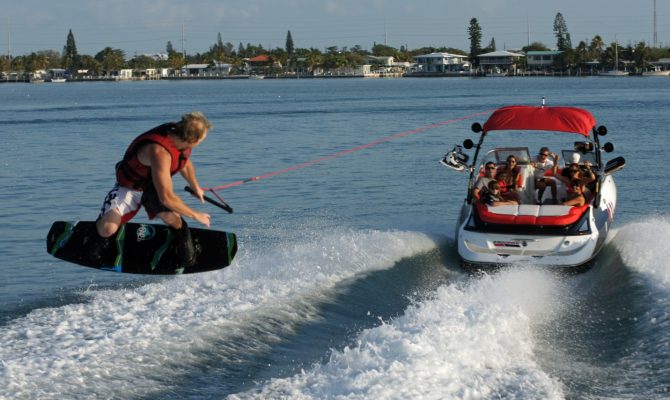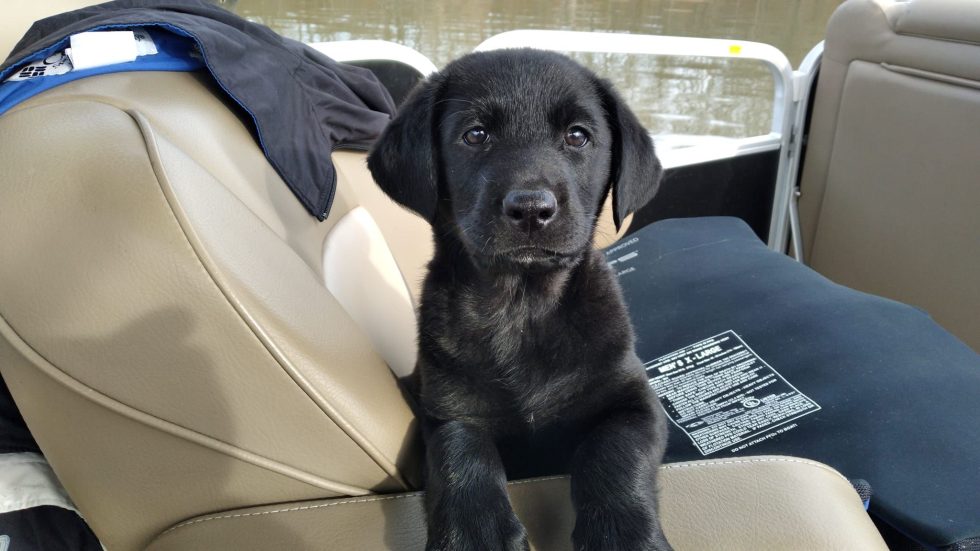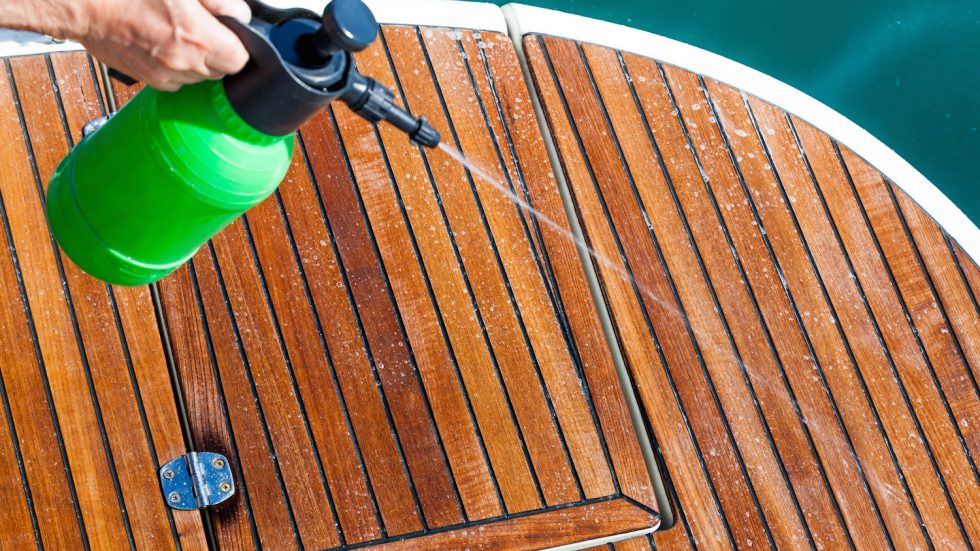So, how do you go from arm-ripping rookie to pro puller? We asked Scott Atkinson of USA Waterski for his pointers.
“A common problem we see with boat operators who are new to towing is not waiting for the verbal signal from the person in the water that he or she is ready,” said Atkinson, adding that the signal should be verbal, as the skier’s/rider’s hands are usually occupied with holding onto a tow rope and can’t be used to communicate as they can once the boat is underway.
“‘Hit it’ or ‘go’ are the most common verbal signals we hear,” said Atkinson. “Whatever the command used, it’s something that must be agreed upon beforehand as the signal the operator waits for before accelerating.”
Other common mistakes that rookie tow-boat operators make, said Atkinson, include not having the engine trimmed all the way down and in line with the keel at the hole shot.
Ready, Set, Tow
When preparing to tow, the operator should:
- Appoint a responsible person on board to act as an observer (spotter).
- Review hand signals with the skier/rider to ensure proper communication.
- Make sure the skier/rider is wearing a Coast Guard-approved life jacket designed for water sports.
- Be familiar with the area and aware of any hazards such as shallow water, rocks or bridges.
- Start the engine only after making sure that no one in the water is near the propeller.
While underway with a skier/rider in tow, the operator should:
- Accelerate the boat slowly until the tow rope is tight.
- When the skier/rider provides the verbal signal and there is no traffic ahead, take off in a straight line with enough power to raise the skier/rider out of the water.
- Once the skier/rider is up, adjust the speed according to the signals given by the skier/rider.
- Keep the skier/rider at a safe distance (at least twice the length of the tow rope) from the shoreline, docks, hazards and people in the water.
- Avoid congested areas, beaches, docks and swimming areas and maintain designated traffic patterns as directed.
- Maintain a sharp lookout for other boats and obstructions in the water, while allowing the observer to watch the skier/rider.
- Be prepared to respond to the skier’s/rider’s signals and signal the skier/rider of your intentions.
Man Down
The boat’s speed should be determined by the rider’s weight and ability, as well as the activity. Most skiers will be comfortable at speeds between 18 and 30 mph. Wakeboarding uses slightly slower speeds: between 16 and 19 mph. Children and beginner skiers/riders should be towed at slower speeds. Tubing can take place at almost any speed, but typically from 8 to 25 mph.
When the skier/rider has fallen or dropped into the water after signaling to end the session, the operator should:
- Slow the boat and circle the skier/rider either to return the tow line or pick up the skier/rider.
- Always keep the skier/rider in view and on the driver’s side of the boat.
- If required by state law, display a red or orange skier-down flag to alert other vessels that a skier/rider is down.
- Shut off the engine before allowing the skier/rider to board the boat.
- Retrieve the tow line after the skier/rider is aboard, unless planning to tow another skier/rider.
Visit www.usawaterski.org for additional boat operation tips and for the responsibilities of the observer and skier/rider, who are both essential links in the chain when it comes to safe towing and tow sports.
Author: Dan Armitage is a regular contributor to HeartLand Boating




